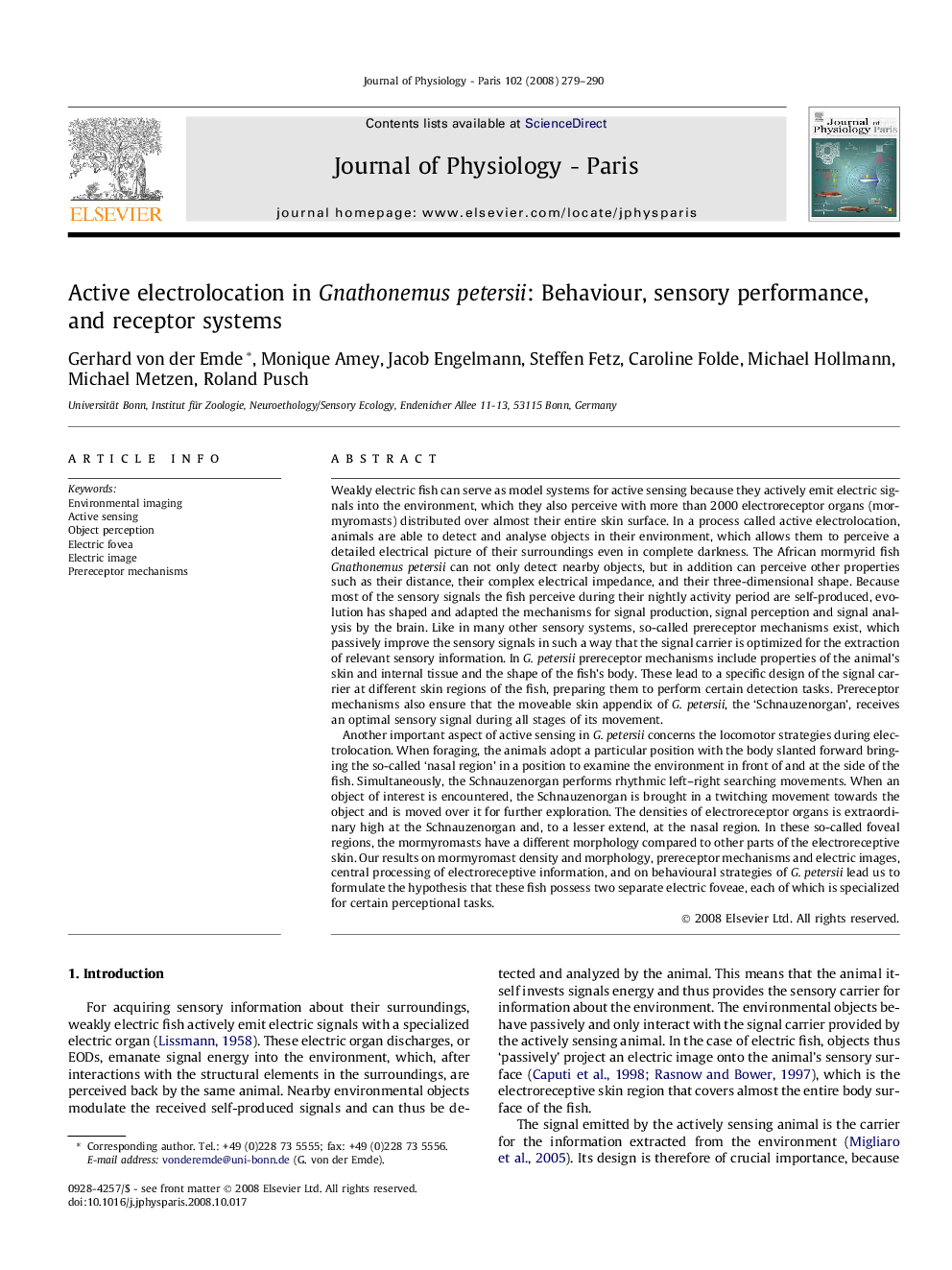| کد مقاله | کد نشریه | سال انتشار | مقاله انگلیسی | نسخه تمام متن |
|---|---|---|---|---|
| 2842493 | 1571035 | 2008 | 12 صفحه PDF | دانلود رایگان |

Weakly electric fish can serve as model systems for active sensing because they actively emit electric signals into the environment, which they also perceive with more than 2000 electroreceptor organs (mormyromasts) distributed over almost their entire skin surface. In a process called active electrolocation, animals are able to detect and analyse objects in their environment, which allows them to perceive a detailed electrical picture of their surroundings even in complete darkness. The African mormyrid fish Gnathonemus petersii can not only detect nearby objects, but in addition can perceive other properties such as their distance, their complex electrical impedance, and their three-dimensional shape. Because most of the sensory signals the fish perceive during their nightly activity period are self-produced, evolution has shaped and adapted the mechanisms for signal production, signal perception and signal analysis by the brain. Like in many other sensory systems, so-called prereceptor mechanisms exist, which passively improve the sensory signals in such a way that the signal carrier is optimized for the extraction of relevant sensory information. In G. petersii prereceptor mechanisms include properties of the animal’s skin and internal tissue and the shape of the fish’s body. These lead to a specific design of the signal carrier at different skin regions of the fish, preparing them to perform certain detection tasks. Prereceptor mechanisms also ensure that the moveable skin appendix of G. petersii, the ‘Schnauzenorgan’, receives an optimal sensory signal during all stages of its movement.Another important aspect of active sensing in G. petersii concerns the locomotor strategies during electrolocation. When foraging, the animals adopt a particular position with the body slanted forward bringing the so-called ‘nasal region’ in a position to examine the environment in front of and at the side of the fish. Simultaneously, the Schnauzenorgan performs rhythmic left–right searching movements. When an object of interest is encountered, the Schnauzenorgan is brought in a twitching movement towards the object and is moved over it for further exploration. The densities of electroreceptor organs is extraordinary high at the Schnauzenorgan and, to a lesser extend, at the nasal region. In these so-called foveal regions, the mormyromasts have a different morphology compared to other parts of the electroreceptive skin. Our results on mormyromast density and morphology, prereceptor mechanisms and electric images, central processing of electroreceptive information, and on behavioural strategies of G. petersii lead us to formulate the hypothesis that these fish possess two separate electric foveae, each of which is specialized for certain perceptional tasks.
Journal: Journal of Physiology-Paris - Volume 102, Issues 4–6, July–November 2008, Pages 279–290